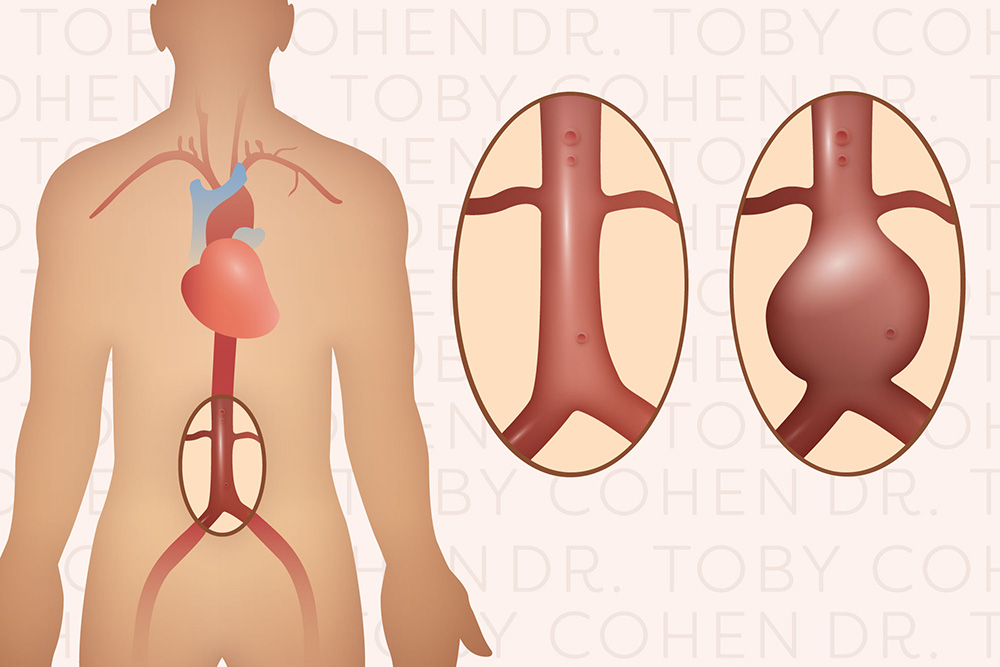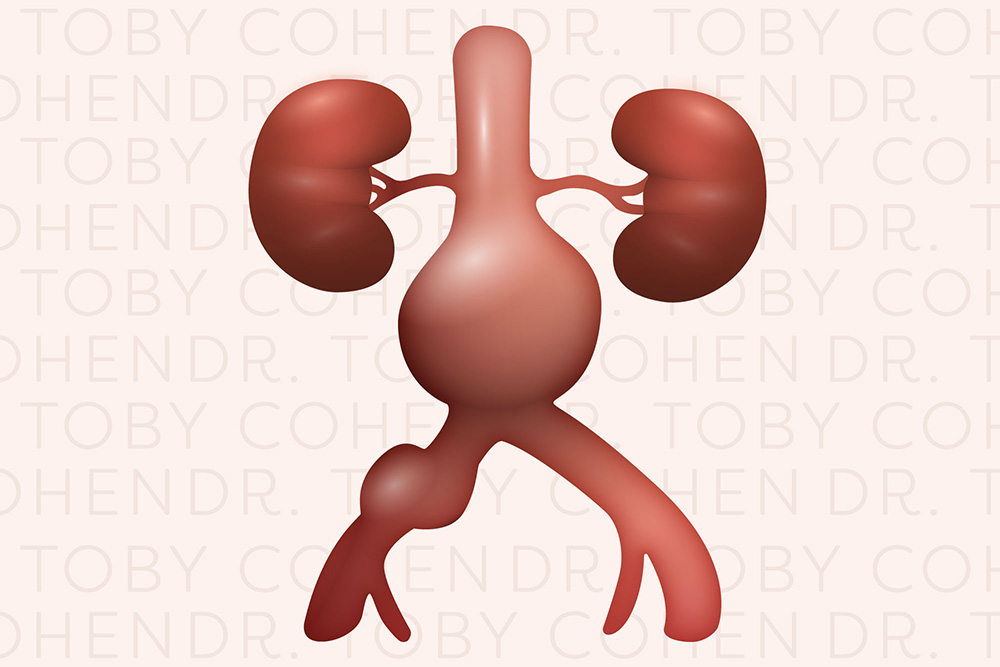Enquire Now
Fill out the form below and we will get back to you as soon as we can.


When there is a weakness in the arterial wall of the aorta, abnormal swelling or a bulge in the wall of the artery can occur. This is known as an aneurysm. This most commonly occurs below the kidneys. Aneurysms are more common in males over 60, smokers and patients with a family history of aneurysm.
If you have been diagnosed with an aortic aneurysm, it is important that it is closely monitored. On average, an aneurysm will grow approximately 10% per year. Growth can be monitored using regular abdominal ultrasounds; however, once it reaches 5cm Doctor Cohen will ask that a CT Scan be undertaken to get a better look at the artery, and to help form a treatment plan.
The aorta is the major blood vessel that takes blood to the legs and is
divided into four parts:

There are two main treatments for aortic aneurysm:
The vast majority of patients are treated via the endovascular approach. This procedure requires a catheter to be inserted through a blood vessel located in the groin. The stent graft consists of three pieces and is deployed beneath the kidneys. It looks like a pair of trousers and allows the blood to flow through the graft and not against the weakened wall. This procedure usually takes around 60 to 90 minutes to complete, with you walking post procedure around four hours, and home in two days.
There are two main kinds of treatment using endovascular techniques.
In some cases, open surgery will be required to treat the aneurysm. This will involve an incision being made in the belly and will usually take around three hours to complete. After the procedure you will go to intensive care for 24 hrs and then back to the ward. The hospital stay is around 7 to 10 days. As each patient is unique, Doctor Cohen will take the time to carefully consider and discuss the best approach for your personal situation.
Fill out the form below and we will get back to you as soon as we can.